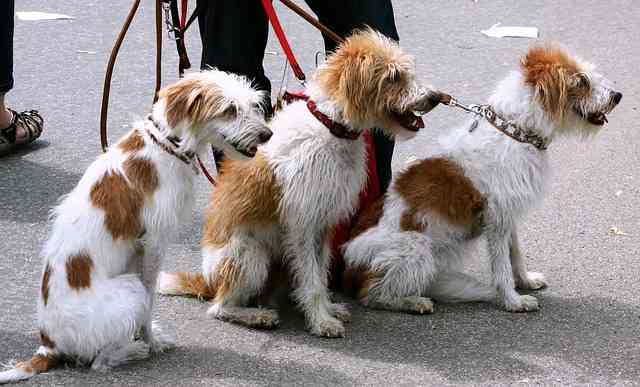I’m crazy about dogs, which explains why a New York Times article about a brand-savvy dog walker named Precious Costello Caldwell has been bookmarked on my computer (and stuck in my mind) since it was published earlier this year.
Here are my thoughts on what Caldwell can teach entrepreneurs and business people everywhere about branding your business.
Brands are Feelings
Caldwell is in the business of dog walking. His company is called Royal Wolves. His brand, however, is about emotions like comfort and peace of mind which he delivers daily to dog owners living on NYC’s Upper West Side.
Knowing the value that his clients place on a professional appearance, Caldwell has invested thousands of dollars in stylish uniforms for himself and his small staff. He walks all his four-legged charges on leather leashes and outfits them with custom-printed neckerchiefs, too.
If riding a Harley-Davidson feels liberating, and visiting Disney World feels magical, then hiring Mr. Caldwell makes big-city dog owners (and cautious doormen) feel comfortable and safe. By managing his brand, and not just tending to his business, Caldwell makes clients feel like members of an exclusive club—a prestigious “pack,” so to speak.
Bottom line: Your brand tells people what they can expect to feel. It gives them the ultimate reason to choose your services over someone else’s.
Every Touch Point Matters
Your brand is the sum of everything that you do. Caldwell understands that every interaction that he and his employees have with clients (and potential clients) is a chance to reinforce the company’s brand promise…or to take away from it. Caldwell even fired an employee for not taking the dress code seriously and showing up to work wearing sneakers. (“This is New York City—people like glitz and glamour.”)
If you own or manage a business, the only way to ensure a consistent, 360-degree brand experience is to get a handle on all your brand touch points. This includes how you inform people about your products or services (pre-purchase awareness), how you turn them into clients (point of purchase experience), and how you treat them thereafter (post-purchase relationship).
Bottom line: To deliver a consistent brand experience, you have to identify, prioritize and manage all your touch points.
Carve Out a Niche
Generally speaking, dog walking is a commodity business. At least it is in our neighborhood, where dog walkers by the dozen compete on price and convenience alone. Offering no perceived intangible attributes, their services are fully interchangeable with one another.
Caldwell, however, has brought uniformity to a subset of NYC’s dog walking business. Specifically, he saw an opportunity to cater to Manhattan’s pampered pets by building a brand whose attributes include extraordinary attention to detail and impeccable fashion style.
Bottom Line: You may have hundreds (or thousands) of competitors for your business, but your brand distinguishes you from everyone else.
As far as I can tell, Caldwell doesn’t have a website and isn’t active on any social media sites. This probably has little to do with his age (he’s 67!) and more to do with the fact that he doesn’t need them. On the Upper West Side, he and his employees cut such figures that people regularly stop to ask questions and request business cards.
As for the dogs? They appear to be unaware of Caldwell’s brand savvy, but happy to be part of his pack.

